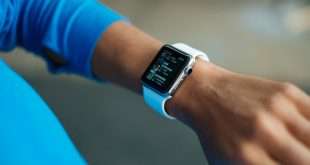In recent years, Virtual Reality (VR) has emerged as a revolutionary technology, transforming various industries and enhancing user experiences. In this comprehensive guide to wireframing and prototyping, we delve into the profound impact of VR on the design process. From its applications in wireframing to creating interactive prototypes, VR opens up a whole new dimension of possibilities for designers and developers alike.
Introduction: Embracing Virtual Reality in Design
In the ever-evolving landscape of design and development, embracing cutting-edge technologies is essential to stay ahead. Virtual Reality, once confined to gaming and entertainment, is now making significant waves in the world of wireframing and prototyping. By immersing designers and stakeholders in a virtual environment, VR revolutionizes the way ideas are conceptualized, refined, and validated. With its ability to simulate real-world interactions, VR eliminates the ambiguity often associated with traditional 2D wireframes and static prototypes. Designers can now walk through their creations, interact with elements, and gain invaluable insights into user behavior. The result is a more efficient, intuitive, and user-centric design process.
Understanding the Power of VR in Wireframing
Visualizing Concepts with Immersive Wireframes
Incorporating VR into wireframing allows designers to transform abstract ideas into tangible, immersive experiences. With a headset on, designers can craft three-dimensional wireframes, enabling stakeholders to grasp the vision and functionality of the product better. This enhances communication and collaboration among team members and clients, leading to more focused and actionable feedback.
Efficient Iterations for Optimal Designs
VR facilitates rapid iterations and quick adjustments in wireframes, streamlining the design process. Designers can make changes on the fly, instantly observing how alterations affect the user experience. This real-time feedback loop significantly reduces the time and effort spent on back-and-forth revisions, ultimately resulting in more refined and user-friendly wireframes.
Evaluating User Interactions in a Virtual Space
Traditional wireframes often fall short in replicating real-world user interactions. However, VR provides an ideal platform to test and evaluate user interactions in a simulated environment. Designers can assess the usability of interfaces, identify pain points, and make informed decisions that prioritize user satisfaction.
The Power of Prototyping in Virtual Reality
Interactive Prototypes for Enhanced User Testing
Prototyping in VR offers an unprecedented opportunity for user testing and validation. By presenting users with lifelike interactions, designers can gather invaluable insights into user behavior and preferences. This data-driven approach empowers teams to refine designs iteratively, resulting in a product that aligns perfectly with users’ needs and expectations.
Contextualizing Designs for Real-World Scenarios
Traditional prototyping often requires the imagination of stakeholders to envision the product in real-world scenarios. VR bridges this gap by allowing stakeholders to experience the product in its intended environment. Whether it’s an app for interior design or a virtual walkthrough of a construction project, VR prototypes offer a level of context and realism that is unparalleled.
Collaborative Design Reviews in Virtual Space
VR fosters collaboration and engagement during design reviews. Stakeholders from different locations can virtually gather in the same space, experiencing the prototype simultaneously. This dynamic environment encourages active participation and expedites the decision-making process, ensuring that everyone’s input is considered.
The Future of VR in Wireframing and Prototyping
Integration with Augmented Reality (AR)
The fusion of VR and AR is on the horizon, promising an even more immersive and interactive design experience. Augmented Reality overlays virtual elements onto the real world, providing designers with real-time feedback on usability and aesthetics. This integration is set to redefine the boundaries of wireframing and prototyping, offering an unparalleled level of realism.
Democratization of VR Tools
As technology advances and becomes more accessible, VR tools and hardware are becoming increasingly affordable and user-friendly. This democratization of VR enables more designers and developers to embrace its capabilities, leading to a wider adoption of VR in the design industry.
Enhanced Data Analytics for Design Optimization
With VR’s ability to capture user interactions, heatmaps, and gaze tracking, data-driven design becomes more robust. Analyzing these metrics can unearth valuable insights, enabling designers to make data-backed decisions and continuously optimize their designs for enhanced user experiences.
Bottom Line
Virtual Reality has transformed wireframing and prototyping into dynamic, interactive experiences that transcend traditional design methods. By embracing VR, designers can visualize concepts, iterate more efficiently, and test with real users in immersive environments. As we look to the future, the integration of VR with AR and the increased accessibility of VR tools promise to elevate design processes further. Embrace the power of Virtual Reality, and unlock a realm of possibilities for enhancing user experiences like never before.
Commonly Asked Questions
Q1. Can Virtual Reality be used for all types of design projects?
Virtual Reality can be utilized in a wide range of design projects, including web and app development, product design, architecture, and even marketing campaigns. Any project that involves user interaction and visualization can benefit from VR in wireframing and prototyping.
Q2. How does VR enhance collaboration among design teams?
VR fosters collaboration by bringing team members together in a virtual space, allowing them to interact with designs simultaneously. This shared experience promotes open discussions and quick decision-making, leading to more cohesive and well-rounded design outcomes.
Q3. Are there any drawbacks to using VR in the design process?
While VR offers numerous benefits, it does come with some challenges. Initial setup costs, hardware requirements, and the learning curve for using VR tools can be potential obstacles for smaller design teams. However, the long-term advantages in terms of efficiency and user satisfaction often outweigh these initial challenges.
Q4. How does VR prototyping improve user testing?
VR prototyping provides a more realistic and context-rich environment for user testing. Users can interact with the product as if it were already developed, leading to more authentic feedback and insights. This enables designers to identify potential issues and make informed design decisions.
Q5. Is Virtual Reality the future of design?
Virtual Reality is undeniably a significant part of the future of design. Its ability to immerse designers and users in lifelike experiences revolutionizes the way products are conceived and developed. As VR technology becomes more accessible and integrated with other cutting-edge solutions like Augmented Reality, its influence on design will only continue to grow.
 webfily
webfily



